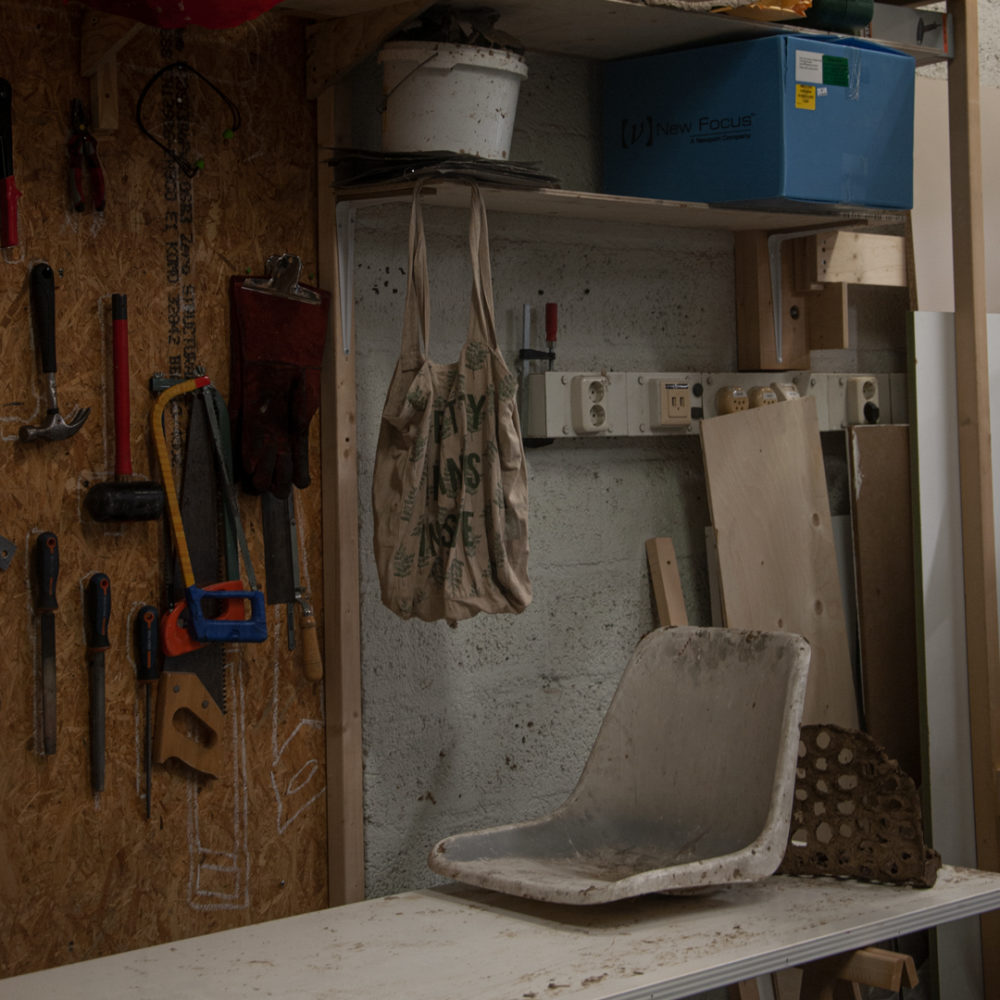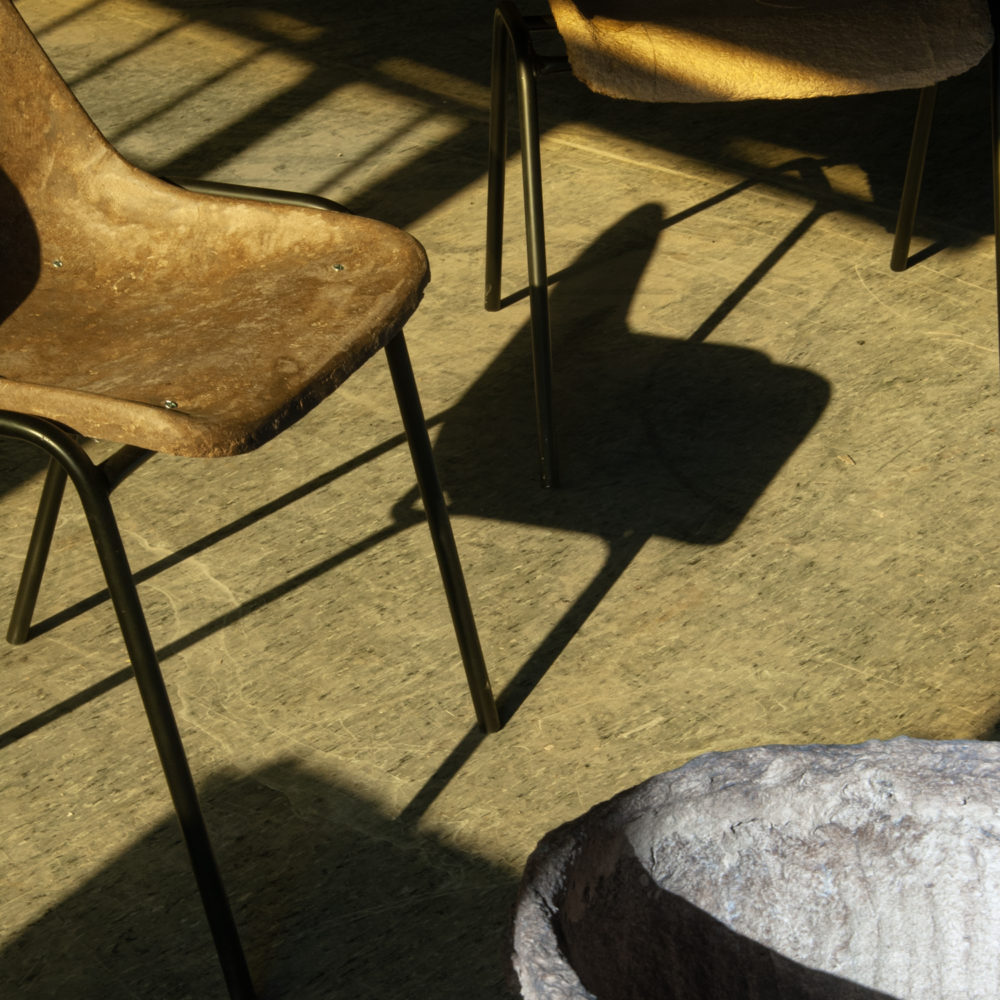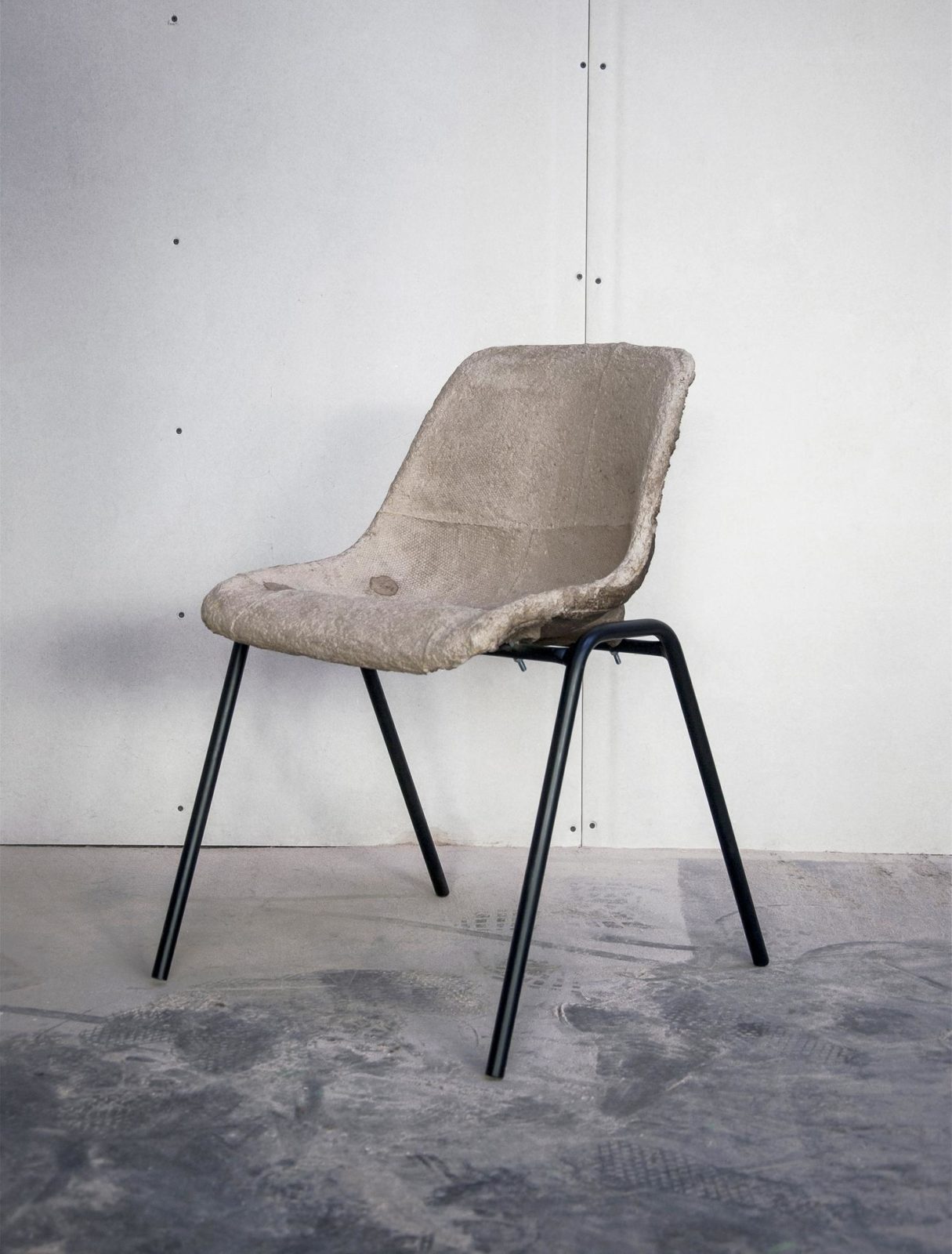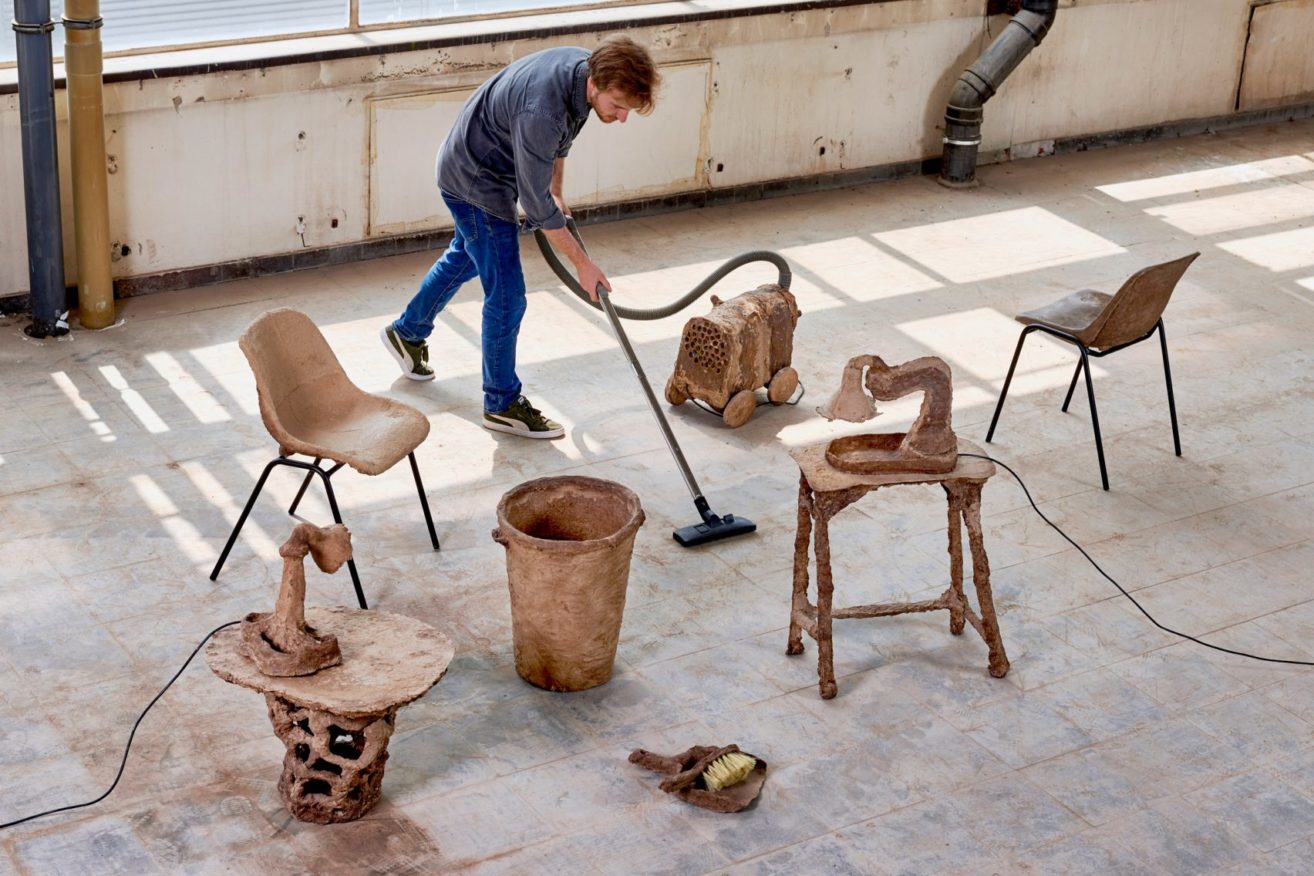French designer and a 2021 graduate of the Design Academy Eindhoven Vincent Dassi has found inspiration and meaning in the most modest of materials: paper pulp. The maker of unique objects and furniture uses paper-mâché to create and mend household items with as low ecological impact as possible. The ongoing ecological crisis inspired Dassi to come up with the idea, which he says could alleviate the environmental impact of design, as the accessible and cheap process of making moldable paper clay out of recycled cardboard boxes could in some instances replace the use of plastic, or in the very least, curb consumption habits.
Pulp-It! is an initiative to produce strong cardboard objects and find ways to optimize their making process. Every hand-made cardboard object is a victory, it doesn’t matter who the maker is!
 “Pulp-It! is an initiative to produce strong cardboard objects and find ways to optimize their making process. Every hand-made cardboard object is a victory, it doesn’t matter who the maker is! That’s why tutorials, tools, and tips are free to access on this website.” Dassi writes.
“Pulp-It! is an initiative to produce strong cardboard objects and find ways to optimize their making process. Every hand-made cardboard object is a victory, it doesn’t matter who the maker is! That’s why tutorials, tools, and tips are free to access on this website.” Dassi writes.
Dassi employs a food processor to convert cardboard into paper pulp, which he subsequently shapes into three-dimensional structures through various techniques. The paper pulp can be utilized to fashion new items, repair damaged or neglected objects, or customize objects for different purposes.
When talking about his inspiration, Dassi says “As a designer, you can often feel overwhelmed and guilty about creating objects. I aimed to discover a method for crafting objects with the least possible ecological impact.” His intention was to maintain a low-tech approach that others could easily reproduce.
The designer’s ultimate goal is to provide an alternative to the ever-accelerating consumer culture by empowering people to craft their own objects using locally sourced and recycled materials instead of simply purchasing new items online.

Dassi believes that this also enables the maker to transform from a mere consumer into an active participant in the design and crafting process, fostering a stronger connection to the items they create.
Dassi also shares his know-how and technique for making his paper pulp on the Pulp It platform, for all interested to learn and try, along with instructional videos demonstrating how to create everyday items such as chairs and desk lamps. He also shares his unique recipe for making the paper pulp, which uses rice starch instead of glue. The process involves shredding soaked paper or cardboard waste into a blender before adding the starch to create a clay-like substance that can be easily molded into any shape. Dassi has also constructed his own press to remove water from the paper clay, and instructions for building this press from readily available materials can also be found on the website. So far, Dassi has created a chair, coffee table, lamp, vacuum cleaner, and even a guitar.
Beyond being sustainably produced, perhaps the biggest advantage of using papier-mâché pulp is the ability to reshape and repair items with cheap resources. “If it breaks, don’t panic; everything can be fixed with a bit of fresh pulp,” says Dassi.
Pulp-It! is an initiative to produce strong cardboard objects and find ways to optimize their making process. Every hand-made cardboard object is a victory, it doesn’t matter who the maker is! That’s why tutorials, tools, and tips are free to access on this website.




You are currently viewing a placeholder content from YouTube. To access the actual content, click the button below. Please note that doing so will share data with third-party providers.
More Information© Pulp-It!

